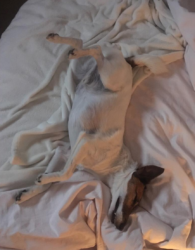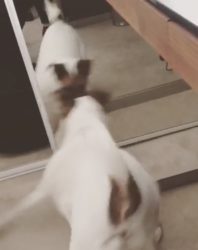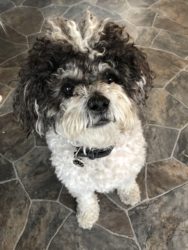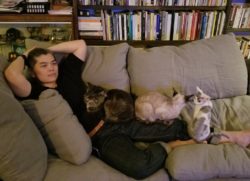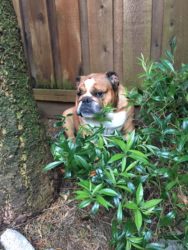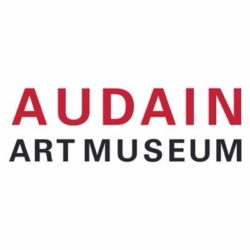#callresponse, co-organized by Tarah Hogue, Maria Hupfield and Tania Willard, began at grunt gallery in 2016. The exhibition has toured across Canada and the US for two years and recently came to a close at TRUCK Contemporary Art and Stride Gallery in Calgary. To mark the end of the tour, grunt’s curatorial interns, Whess Harman and Nellie Lamb, chatted with Tarah about #callresponse and the roles of collaboration and mentorship in her practice.
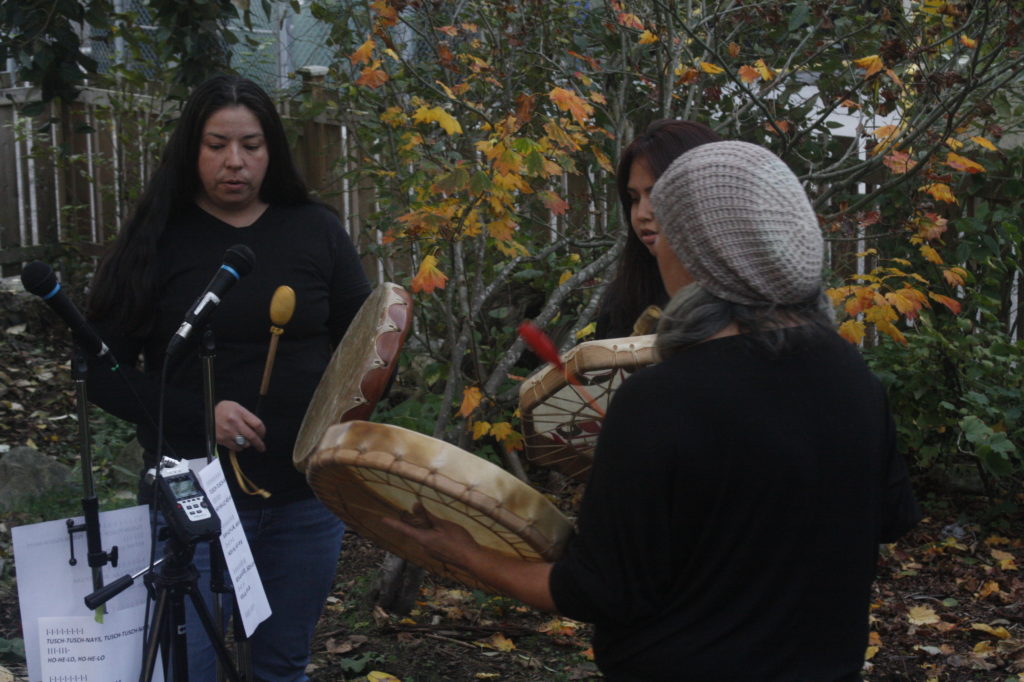
Ursula Johnson with Charlene Aleck and Cease Wyss performing at the #callresponse opening in 2016. Photo by Merle Addison.
NL: Can you start by briefly describing #callresponse?
TH: #callresponse takes as its starting point five projects that were commissioned by Indigenous women-identifying artists based across Canada and into the US. The invitations were extended to these artists in particular because they are all very much enmeshed in working with community in different ways and their practices are all quite diverse, ranging from performance to ceremony to new media. The context that we asked those initial five artists to respond to was around reconciliation but in a roundabout way. We thought about how the projects that these artists are already committed to working on have a really transformative capacity, and looked at that as a starting point in order to turn that settler-nation-state-to-Indigenous relation within reconciliation on its head. We then asked each of those artists to extend that invitation to a collaborator or respondent to create these dialogues between practices. We were thinking about this call and response structure, but the artists took that in so many different directions. Christi Belcourt and Isaac Murdoch decided to work together and position the land as their respondent, so there’s different degrees of collaboration or mentorship or response throughout the project.
WH: I was just reading over everything on the website again and the initial outset of how the project was described and, as an artist and someone at grunt now, it stood out so much how present these questions still are, not just as institutions but as artists. One of the questions I had about that is, how do you think institutions now are responding to this idea of reconciliation? Do you think that’s changed a lot or do you think #callresponse could just keep going until institutions responded in a meaningful way?
TH: [laughs]…until decolonization?
WH: [laughs] Yeah, until we achieve decolonization!
TH: That’s an interesting question because the experience of working with all of the institutions that we partnered with was very different and demonstrated where different organizations are in that relationship-building process. Like at Blackwood Gallery, we were in the context of an academic institution—they’re at the University of Toronto Mississauga—and part of what we did when we were there was to meet with university faculty and talk about their efforts to indigenize the academy, which is something that was a relatively new path for them at that time, or at least was new in terms of the university recognizing the work that Indigenous faculty were already doing in a systematic way. And then at a place like AKA Artist Run Centre in Saskatoon we were building upon work that they had already been doing within the community there, so it was really just about how we could give our resources over to the work that was already happening. I think that because the project doesn’t centre that settler-Indigenous relationship within reconciliation in the same way, that it could keep going on for a long time. Not that I don’t think that other projects that privilege that relationship aren’t important but it’s also like, who’s benefit is that for?
WH: It’s a heavy load on Indigenous artists. I feel, again speaking as an artist, being asked to do that, it’s like, I don’t have the answer and that’s what so many of these projects seem to frame like: “We’re going to have a reconciliation project and we’re going to have an answer!” But you are not! It’s going to be exhausting and I might be kicking and screaming by the time you’re finished.
TH: I asked Maria and Tania to work with me because they’re two people who I look up to immensely, and we further invited other artists who we looked up to immensely. A lot of the artist-respondent pairings had that aspect woven into it. Some artists chose to respond more directly to that context of reconciliation, like Christi and Isaac saying we’re not ready for reconciliation; we have to reconcile ourselves with the land before we can do something else.
WH: On the [web]page there’s a little thing where you’re quoting Leanne Simpson that was something that stood out to me about the whole process. With reconciliation are tied in these concepts of recognition and those concepts of recognition are so different when Indigenous people are working with other Indigenous people—it strengthens those bonds.
TH: That idea of living as if, as if we have realized the realities that we want on the ground. I love Leanne Simpson.
NL: I really like this web-like, looking-in-multiple-directions-at-the-same-time idea. When I originally read about the project I understood it as starting with you and hopping over to these artists and then they hop to these [other] artists, but listening to you talk about it now, it’s not so linear.
TH: No it’s not. That web of relationships, I’m coming to realize, is part of my curatorial practice both unconsciously and consciously. Translating that way of working to working at the Vancouver Art Gallery is a little bit complicated. How do you maintain that? How the institution responds to that methodology is interesting.
WH: It must be hard with larger institutions. I imagine there is this unspoken thing about making things palatable for an audience but a project like #callresponse is asking, well, what’s palatable for an institution?
TH: That’s something that I’ve puzzled over about the exhibition in general as it’s travelled to different places, because the story of the project is so rich and all of the different in-person interactions and experiences are at the heart of the exhibition, and then you have a series of works that stay the same, that travel to each place with a few changes, like when Ursula did a new song line that would go into the gallery instead of the initial one that she and Cheryl did together. A lot of the works in the show point outside of themselves. Maria’s felt bag is an object that’s activated in performance and the plywood cut-out buffalo robe points to the fact that that original object is not there any more. I’ve always been curious throughout the process of the exhibition about how people experience that pointing outside of the gallery through these objects that are inside of the space. Allison Collins, when the show opened here, said that the role of imagination in looking at the exhibition was something that stood out for her right away. Thinking about what the stories of the objects were outside of the space. She said something along the lines of imagination is not valued as much in exhibitions as it should be.
WH: Initially I also had the same idea that this is a very linear project in many ways, but did you find overall that you were enmeshing more into things, into networks?
TH: Yeah, I would say so. It’s interesting to re-install a show over and over again and see how it shifts in every location and every context and what kinds of conversations come out of those contexts. The most enmeshed aspect of the project was me, Maria and Tania working together. That kind of coordinating but also curatorial conversations around each project—it was really thinking about, in each context, what projects we could activate or what artists we could bring in that would speak well to that context. Really it was about being responsive to that set of conditions, but sort of diving deeper into the projects each time.
NL: Do you have an example of one install or experience of install that changed really drastically or in an important way?
TH: Ursula’s project is a good example of that. Her project, The Land Sings, was in existence before #callresponse started. She had already done three or four song lines, so the project was a way of building on that work and acknowledging that work. We did song lines here, in Mississauga, New York, and Halifax. It moved from the East Coast to the West Coast and then back again over the course of the tour. In each case Ursula is working with singers, hand drummers, and language speakers in that area, and thinking about the relationships between the gallery and the closest First Nation community. That project shifted each time. In New York the song line was mapped onto the skyline of the city as something that’s such a defining feature there and is overlaid on top of Indigenous space and closely follows historic travelling routes that Indigenous Lenape would have travelled along.
NL: That site-specificity seems like such an integral part of the project.
TH: I think so. The initial five commissions were asked to be “locally responsive”; we didn’t really use the term “site specific.” I guess it started by thinking about how all of these artists are committed to doing the work that they’re doing in their own communities. That community is differently defined by everyone. It’s not about an ancestral or reserve community. It can be a shifting context that the artists are all responding to. Also, when we approached galleries for the first time we always asserted that this is a partnership. So the galleries need to take the lead, developing programming that makes sense in their context. We’re not just going to parachute in and do this exhibition; it wouldn’t be in line with how the project began or how it developed. It’s all the context; the responsiveness to context has always been a really central aspect to the project.
WH: Did you find some resistance from some places that didn’t understand where the project was coming from?
TH: No, luckily our partnerships were formed well in that way. Certainly some institutions had much more active, or ongoing or in-depth conversations than others that just rolled with it in their own way. Or [with] some people, it was a really collaborative coming to understand what needed to happen. I think that most of our partners understood for the most part what we were trying to do. There were challenges along the way. I think once we had done the first few, you kind of figure out what questions to ask, what kind of conversations need to happen at the beginning in order to get to what needs to happen. There’s always going to be a set of possibilities that we are responding to and another set of considerations that can be discussed with the partners.
WH: It seems like a difficult thing to do something like an exhibition, which is very administrative just by nature of being attached to an institution, [and] to also have it sincerely engage with the people that are going to see it. A thing I think about a lot when I’m asked to do a workshop is, well, what’s actually beneficial to you? To stop you from just dropping in and being like, “These are my ideas!” and then peace-ing out and ending the dialogue.
TH: I think that a lot of relationships were formed through the project. The participating artists are variously involved in communities where the show went to, so we were able to build upon those relationships a little bit.
WH: I was never able to make any of the performances just by nature of always travelling myself. I just remember each time there was a performance there was a spike in the hash tag and just feeling this intense feeling of FOMO. But also, going through the comments and seeing everyone else who couldn’t make it, there’s this weird outside community that wasn’t able to attend.
TH: Speaking of spider webs and networks, right? The amount of people who have followed the project online and through its various iterations has been pretty spectacular. It’s been really heart-warming in that respect. All of the artists, especially the five initial artists, they’re all such powerhouses. Huge amazing forces to be reckoned with. That was apparent always throughout the exhibitions.
WH: What curatorial projects are you inspired by outside of your own?
TH: Because I’m now working at the Vancouver Art Gallery I’m looking more intensively at what other large-scale institutional work people are doing and always puzzling to myself how they pulled that off. The work that Jamie Isaac and Julie Nagam are doing at Winnipeg Art Gallery, it’s very clearly connected to the community there and has enlivened the space when they activate it through their work and also their ethic and methodology. The way that they work together is really something I admire. And one of the best shows that I’ve seen in the last couple of years is We Carry Forward by Lisa Myers. I saw it when I was in Ontario. It was a group exhibition that just really floored me. She’s a really smart curator. And Lorna Brown at the Belkin, I was thinking about Lorna and Lisa together because they both play upon the meaning and structure of language and then extrapolate that into the artworks that they include.
NL: I’m just thinking about #callresponse ending: it recently wrapped up at its last stop at Stride and TRUCK Gallery in Calgary. Is there a story or a feeling about the impact of the project—maybe something in your own practice—as it comes to a close? How are you reflecting on the project?
TH: Two things come to mind: the scales of intimacy and really public-facing discourse that have both been really fulfilling. I think that’s encapsulated at Stride and TRUCK Gallery in Calgary. We worked with youth from Tsuu T’ina First Nation, which is a program already established with those galleries. A dozen kids came from the rez and we had pizza lunch,we gave them a tour of the show, Maria let them mess with her performance objects, and then we did a pirate radio broadcast in the gallery at TRUCK, which would have a radius of about a block. And the kids, like, played Drake songs and told jokes and we ate chips. It took a few hours before, right at the very end, everyone’s warmed up to each other and we’re chilling and it’s natural. It’s a little different with kids, but there’s a number of moments throughout the project that are small scale and focused on that kind of moment. And then there’s a moment, like opening the exhibition in New York and doing a round table to a packed house, attended by arts workers from around the city. And you recognize that you’re part of a dialogue that people really need to be hearing there and need to be having, because it doesn’t happen enough and the ways that [it] happens aren’t always Indigenous-led. It is a small moment, but you just feel like you’re connected to something that’s wider and urgent. Those nodes of the project are what will resonate with me for a long time to come.

